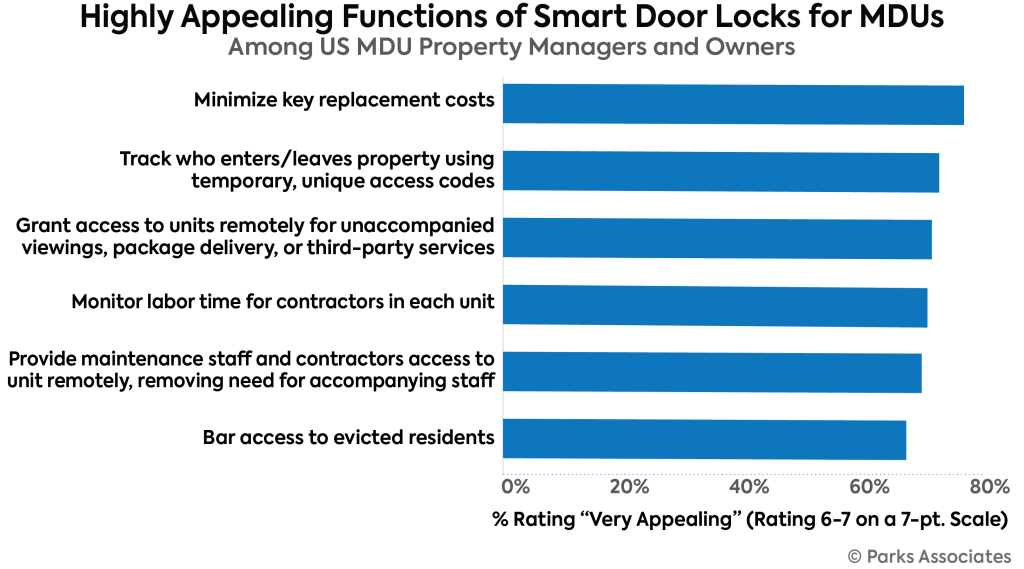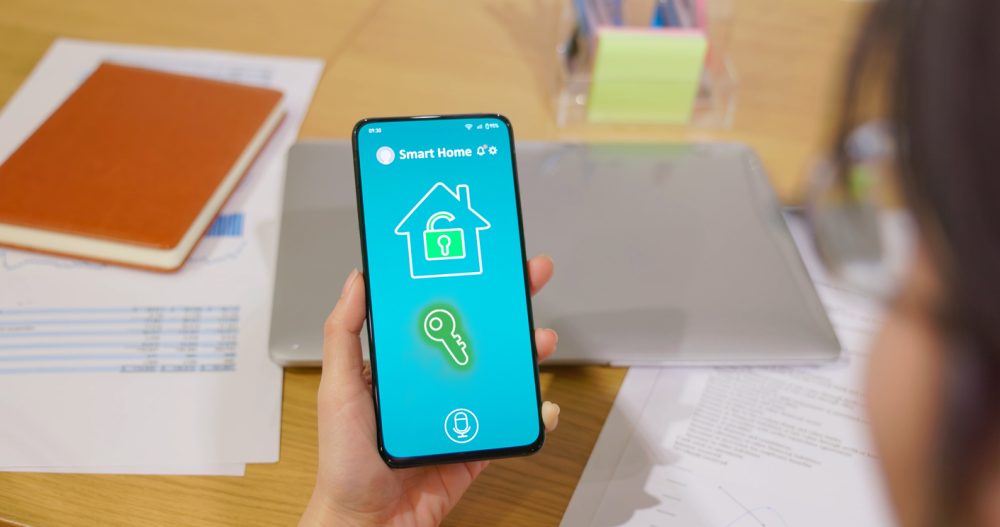Safety and security remain the leading purchase drivers of smart home devices. Smart door locks and smart access control systems provide a foundation of security by helping consumers and building owners/operators monitor and secure the primary access points.
A Future of Services
In addition to these secure entry capabilities, smart door locks and smart access control systems also double as points of access for a future world of services. Companies are vying for control of access points into homes and buildings that enable service opportunities, such as in-home, in-unit, and in-garage delivery, health and wellness solutions, cleaning and pet care services, home and unit rental solutions, and much more. Alignments and partnerships are also helping expand the market beyond safety and security use cases. For example, door lock manufacturers have established integrations with Airbnb and HomeAway reservation systems to enable home hosts to grant access to guests. OEMs are working with real estate developers (single-family and multifamily) to include smart access solutions as a standard part of smart home packages and home control platforms. Parcel delivery services are integrating smart door locks and cameras to offer secure package delivery.

The Benefits to Multi-Dwelling Units
MDU (multi-dwelling unit) owners/operators value smart access control for security, convenience, and OPEX savings. Properties want to grant access to units remotely for unaccompanied viewing, assist with package delivery, control who had access to units, and make key replacement more efficient. The research firm reports that 73 percent of MDU properties with smart door locks use the devices to grant access to units remotely for unaccompanied viewings, package delivery, or third-party services. Additionally, 65 percent use the locks to track who enters and leaves the property using temporary, unique access codes. Further, one-third of MDU property managers report that their residents are demanding the ability to enable remote access to apartment units.
Typical use cases for smart door lock and access control systems include:
• Granting entrance access remotely
• Receiving electronic notifications of who is entering and leaving in real-time
• Assigning permanent and temporary virtual key with access schedules for specific days and times
• Changing or revoking access privileges at any time
• Triggering tamper and forced entry alarms that warn of a possible break-in
Smart door lock solutions have seen steady growth in the past few years, but barriers impede wider and faster adoption. Among them is the current fragmented nature of the space and a supply chain that may not be conducive to future scale. Smart access companies are constantly looking for incremental innovation, progress and technology development that make products better year over year. A new market structure, relying on third-party suppliers, can help realize this progress without these companies having to heavily invest in their own resources or take on the risks.
Companies are capturing new value through innovative technology creating new applications with a clear and quantifiable ROI. Adequate funding for investment in technology often requires companies to think more broadly about their value than for one particular segment of the business. The demands of new tech on processing, power, memory, security and latency for real-time applications are driving companies to look for new ways to build products. Suppliers have an opportunity to better serve manufacturers by operating on a Tier-1 structure, which could provide a more systematic and cost-efficient approach for the development and release of the next generation of products.















